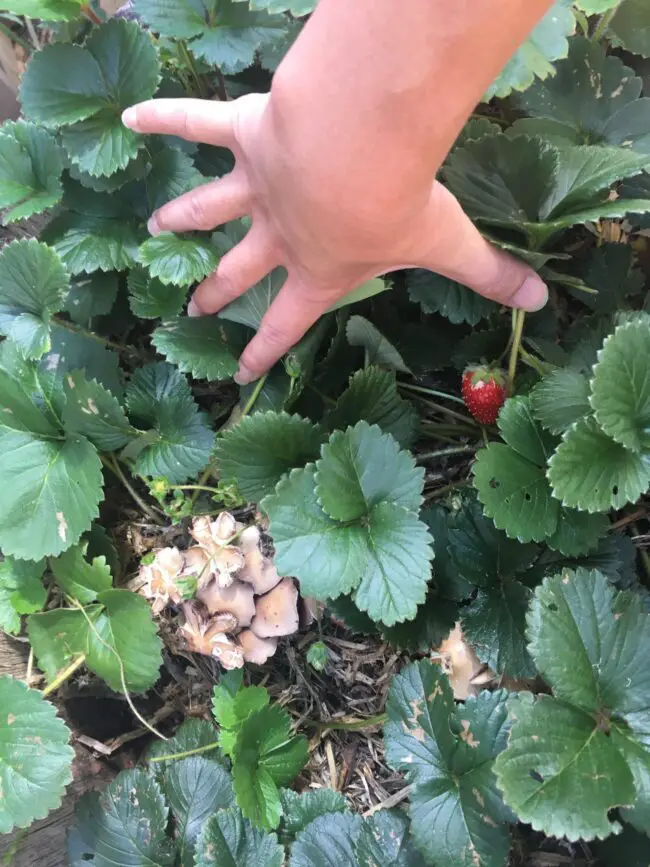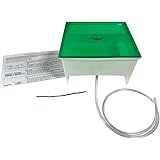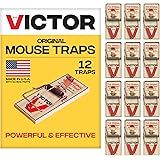Did you know that mushrooms can actually grow in strawberry plants? It may sound strange, but it’s true! If you’ve ever noticed mysterious fungi sprouting up alongside your luscious strawberries, you’re not alone. But fret not, for there is a simple solution to this intriguing phenomenon.
In this article, we’ll explore why mushrooms grow in strawberry plants and how you can effectively address this issue without compromising the health and productivity of your beloved strawberries. So, let’s dive right into the fascinating world of mushrooms growing in strawberry plants and find out what’s really going on here.
Mushrooms Growing in Strawberry Plant
Have you ever noticed mushrooms growing in your strawberry plant? It might seem strange to find mushrooms in your garden, especially in close proximity to your prized strawberries. However, mushrooms and strawberries can coexist, and understanding the relationship between them can help you maintain a healthy garden.
In this article, we will explore why mushrooms grow in strawberry plants, their impact on the plants, and how to effectively manage their presence.
Why Do Mushrooms Grow in Strawberry Plants?
Mushrooms are a common sight in gardens, and strawberry plants are no exception. The presence of mushrooms in your strawberry plant is typically an indication of favorable growing conditions, particularly a moist and rich environment.
Mushrooms thrive in organic matter, such as decaying leaves or wood chips, which are often used as mulch in strawberry beds. The mulch provides the necessary nutrients for mushrooms to grow.
Additionally, mushrooms have a mutually beneficial relationship with certain plants, including strawberries. They form a symbiotic association with the plant roots, known as mycorrhizal fungi. Mycorrhizal fungi help the plant absorb essential nutrients, particularly phosphorus, from the soil.
In return, the plant provides sugars to the fungi through photosynthesis. This symbiotic relationship is crucial for the health and growth of many plants, including strawberries.
Read More: About Gardening In An Apartment Without A Balcony
The Impact of Mushrooms on Strawberry Plants
While the presence of mushrooms in your strawberry plants may not be harmful, it is essential to understand their impact on the plants. Here are some key points to consider:
- Competition for Nutrients:
Mushrooms compete with strawberry plants for nutrients in the soil. However, the mycorrhizal fungi that form a relationship with the strawberry roots generally prioritize nutrient absorption for the plant’s benefit.
Therefore, any competition is usually minimal and does not significantly affect the strawberry plants’ growth.
- Moisture Retention:
Mushrooms and their mycelium (underground network of fungal threads) can help retain moisture in the soil.
This can be beneficial for strawberry plants, especially during dry periods, as they require consistent moisture for optimal growth and fruit production.
- Protection from Pathogens:
Some species of mushrooms have antimicrobial properties that can help protect strawberry plants from certain soil-borne pathogens.
This natural defense mechanism can enhance the overall health of the strawberry plant.
Managing Mushrooms in Strawberry Plants
If you find the presence of mushrooms in your strawberry plants concerning or simply want to manage their growth, here are some effective strategies:
- Proper Mulch Management:
Adjusting your mulch practices can help regulate mushroom growth. Consider reducing the amount of organic matter, such as wood chips or decaying leaves, in your strawberry bed.
Opt for a thinner layer of mulch, ensuring it is not directly touching the strawberry plant stems. This can create a less favorable environment for mushroom growth.
- Improved Drainage:
Excessive moisture can contribute to mushroom proliferation. Ensure your strawberry bed has adequate drainage to prevent waterlogged soil.
Raised beds or adding organic matter like compost can improve the soil structure, allowing excess water to drain away more efficiently.
- Regular Garden Maintenance:
Proper garden hygiene can help manage mushroom growth in strawberry plants. Remove any decaying plant material, including dead leaves or fruit, as they can contribute to the growth of mushrooms.
Regularly inspect your plants for any signs of disease or fungal infections, as these can also encourage mushroom development.
- Fungicides (if necessary):
In extreme cases where mushroom growth becomes problematic, specific fungicides labeled for edible crops can be used. However, it is crucial to carefully follow the instructions and ensure the product is safe for use on strawberries. Always prioritize organic and environmentally friendly options whenever possible.
Discovering mushrooms growing in your strawberry plants might initially raise concerns, but with the right understanding, you can effectively manage their presence. Remember, mushrooms in strawberry plants are often a sign of healthy soil and a beneficial symbiotic relationship.
By implementing proper mulch management, improving drainage, maintaining garden hygiene, and resorting to fungicides only, when necessary, you can strike a balance between your strawberries and the mushrooms that naturally coexist in your garden. Happy gardening!
Frequently Asked Questions (FAQs)
The presence of mushrooms in your strawberry plant is likely due to favorable growing conditions, such as high humidity and organic matter in the soil.
Mushrooms are fungi that thrive in damp environments, and they can often coexist with plants without causing harm.
In most cases, mushrooms are not harmful to strawberry plants. They generally feed on decaying organic matter in the soil rather than the plant itself.
However, if you observe any negative effects on your strawberry plant’s health or growth, it is advisable to consult a gardening expert.
Removing mushrooms from your strawberry plant is not essential unless they are causing significant damage. You can simply pluck them off by hand and dispose of them properly.
Additionally, improving air circulation and reducing moisture levels in the growing area can help discourage mushroom growth.
It is not recommended to consume mushrooms that grow in or around your strawberry plant unless you are an experienced mycologist.
Many mushrooms can be toxic or have hallucinogenic properties, so it is best to avoid consuming them unless you can accurately identify them as safe edible varieties.
To minimize the occurrence of mushrooms in your strawberry plant, you can take a few preventive measures.
Ensure that the soil is well-draining, as excessive moisture promotes mushroom growth. Avoid overwatering your strawberry plant and provide adequate spacing between plants to allow proper airflow.
The presence of mushrooms in your strawberry plant does not necessarily indicate a problem with its health.
However, if your plant shows other signs of distress, such as wilting leaves or stunted growth, it may be advisable to examine the overall health of the plant and address any underlying issues.
Using fungicides to eliminate mushrooms in your strawberry plant is generally unnecessary and may do more harm than good.
Fungicides are primarily used to control fungal diseases rather than remove mushrooms, which are typically harmless and play a role in the natural decomposition process.
While mushrooms themselves do not typically spread to other plants, their presence may indicate favorable conditions for fungal growth in your garden.
It is important to ensure proper sanitation practices, such as removing any decaying plant material, to reduce the likelihood of fungal diseases affecting your other plants.
Read More: About Why Are My Cosmos Not Blooming?
Final Thoughts
Mushrooms growing in strawberry plants can be a cause for concern. These fungi feed on decaying organic matter, potentially competing with the strawberry plants for nutrients and water. The presence of mushrooms indicates an imbalance in the growing conditions, such as excessive moisture or poor soil drainage.
To address this issue, it is crucial to maintain proper growing conditions, including well-draining soil and appropriate watering practices. Regularly inspecting plants for signs of mushrooms and promptly removing them can help prevent their proliferation. By taking these necessary steps, gardeners can successfully manage mushrooms growing in strawberry plants and promote healthier growth for their strawberries.
Auto Amazon Links: No products found.
Perfect Plants Christmas Tree Saver 8oz. | Easy Use Xmas Tree Preserver Food | Have Healthy Green Christmas Trees All Holiday Season
$9.97 (as of November 26, 2025 23:26 GMT +00:00 - More info- Product prices and availability are accurate as of the date/time indicated and are subject to change. Any price and availability information displayed on [relevant Amazon Site(s), as applicable] at the time of purchase will apply to the purchase of this product.
Wilt-Pruf® Christmas Tree/Cutting Preserver Spray |Preserves Christmas Trees, Wreaths, Garlands, Cuttings and Carved Pumpkins | Reduces Needle Drop | Keeps Cut Trees Fresh Longer | Natural (32 oz)
$21.99 (as of November 26, 2025 23:26 GMT +00:00 - More info- Product prices and availability are accurate as of the date/time indicated and are subject to change. Any price and availability information displayed on [relevant Amazon Site(s), as applicable] at the time of purchase will apply to the purchase of this product.
Christmas Tree Watering Funnel – 39 Inch Adjustable 3-Section Design, Reusable & Spill-Free, Easy Watering for Real Christmas Trees
$13.88 (as of November 26, 2025 23:26 GMT +00:00 - More info- Product prices and availability are accurate as of the date/time indicated and are subject to change. Any price and availability information displayed on [relevant Amazon Site(s), as applicable] at the time of purchase will apply to the purchase of this product.
HoHoHoH2o Automatic Christmas Tree Watering System Device, Santa’s Tree Helper Keeps Your Christmas Tree Healthy and Fresh, Refillable 2.5 gallons Capacity Box - Red/Snowflakes
$99.95 (as of November 26, 2025 23:26 GMT +00:00 - More info- Product prices and availability are accurate as of the date/time indicated and are subject to change. Any price and availability information displayed on [relevant Amazon Site(s), as applicable] at the time of purchase will apply to the purchase of this product.
Automatic Christmas Tree Watering System | Reduce Needle Loss | Never Have a Dry Stand | Evergreen Helper® | US Patent 12,102,249
$28.49 (as of November 26, 2025 23:26 GMT +00:00 - More info- Product prices and availability are accurate as of the date/time indicated and are subject to change. Any price and availability information displayed on [relevant Amazon Site(s), as applicable] at the time of purchase will apply to the purchase of this product.
ThermoPro TP16 Large LCD Digital Cooking Food Meat Thermometer for Smoker Oven Kitchen BBQ Grill Thermometer Clock Timer with Stainless Steel Temperature Probe
$17.99 (as of November 27, 2025 14:59 GMT +00:00 - More info- Product prices and availability are accurate as of the date/time indicated and are subject to change. Any price and availability information displayed on [relevant Amazon Site(s), as applicable] at the time of purchase will apply to the purchase of this product.
Zevo Flying Insect Trap Official Refill Cartridges - Fits Both Zevo Trap & MAX Indoor Fly Trap - Authentic Trap+Lock Technology to Catch Gnats, House & Fruit Flys (4 Official Refill Cartridges)
$14.97 (as of November 27, 2025 14:59 GMT +00:00 - More info- Product prices and availability are accurate as of the date/time indicated and are subject to change. Any price and availability information displayed on [relevant Amazon Site(s), as applicable] at the time of purchase will apply to the purchase of this product.
Muddy Mat® Shown on TV Super Absorbent Microfiber Dog Door Mat for Muddy Paws, Non-Slip Washable Pet Rug, Quick Dry Chenille Entryway Carpet, Machine Washable Indoor Outdoor mat, Grey 30"x19"
$18.78 (as of November 27, 2025 14:59 GMT +00:00 - More info- Product prices and availability are accurate as of the date/time indicated and are subject to change. Any price and availability information displayed on [relevant Amazon Site(s), as applicable] at the time of purchase will apply to the purchase of this product.
Victor Mouse Traps M150-12, Metal Pedal, Sustainably Sourced FSC Wood, Wooden Mouse Traps, 12 Metal Pedal Traps
$9.79 (as of November 27, 2025 14:59 GMT +00:00 - More info- Product prices and availability are accurate as of the date/time indicated and are subject to change. Any price and availability information displayed on [relevant Amazon Site(s), as applicable] at the time of purchase will apply to the purchase of this product.
TERRO Ant Killer Bait Stations T300B - Liquid Bait to Eliminate Ants - Bait System - 12 Count Stations for Effective Indoor Ant Control
$10.86 (as of November 27, 2025 14:59 GMT +00:00 - More info- Product prices and availability are accurate as of the date/time indicated and are subject to change. Any price and availability information displayed on [relevant Amazon Site(s), as applicable] at the time of purchase will apply to the purchase of this product.











